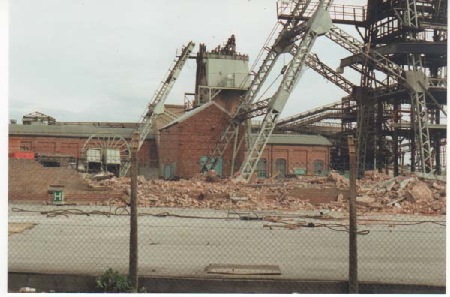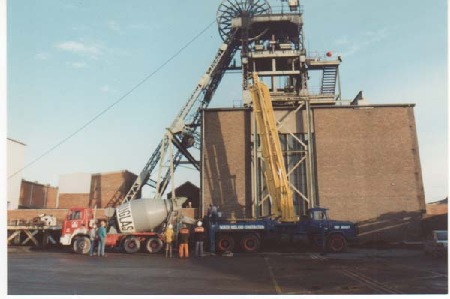



 |
 |
 |
 |
 |
 |
 |
 |
 |
 |
 |
 |
 |
 |
 |
 |
 |
 |
 |
 |
 |
 |
 |
 |
 |
 |
 |
 |
 |
 |
 |
 |
 |
Blidworth Colliery 1926-1989 Facts and
figures and Milestones
Closed on February 3rd 1989. Demolition completed and shafts filled by October
1989.
Colin Stocks, Manager 1989, Les P Wilson, Deputy Manager 1989
The 2
shafts were both 742 yards deep and 20 feet 6 inches diameter
The shafts were filled with concrete and graded limestone chippings and the
demolition of the pit top buildings was completed by October 1989.
Milestones
1938 Pithead baths were opened and extended in 1950 to give 1812 lockers and
108 shower units.
1939 the Miners' Welfare sports pavilion opened
1939 The pit canteen opened
1947 5th May The 5-day working week was instituted by the NCB,
1948 The highest ever output of 771,117 tons for a year, was produced by 1,874
men from the Top Hard seam
1957 Saturday morning coal production was
stopped at all pits at the end of June.
1958, September, Blidworth had the largest conveyor of its kind in the world, a
cable belt was installed which ultimately reached 1 3/4 miles long, carrying
3000 tons of Top Hard coal a day.
1976/77, a £2m scheme was introduced for the electrification of the 50 year old
steam winders at No1 and No2 shafts.
1977 Up to date medical center and canteen facilities were completed at a cost
of £50,000.
1977 On October 29th an open day for miners and their families was arranged by
the then Colliery General Manager Mr Robert (Bob) Siddall
1986 May 1st The National Coal Board changed its trade name to the British Coal
Corporation
Information kindly supplied by Robert (Bob) Bradley, from his book "Pits of
Nottinghamshire, Derbyshire and Leicestershire"

Showing the dismantling and demolition of the Head Stock of No1 shaft (the air intake for underground circulation)
No.2 Shaft is shown in the background

Alternate layers of graded sandstone chippings (shown here) and ready mixed concrete were used to fill the shafts just hours after the last man came to the surface.

The point of no return.
Between layers of sand stone chippings, ready mixed concrete is being poured into the air upcast No. 2 shaft, sealing in millions of pounds of equipment and machinery. It was probably just not economically viable to dismantle and remove it.









